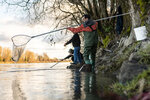
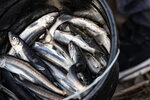

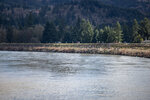
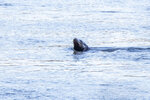
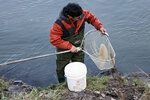
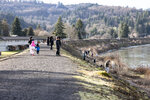
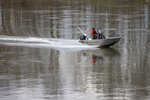
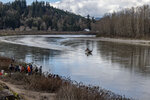
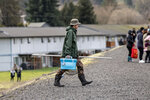
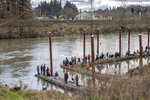
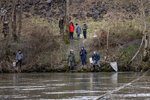
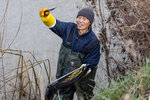
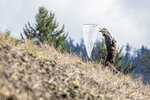
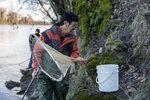
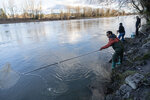
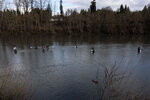
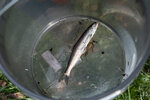
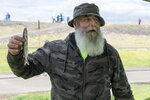
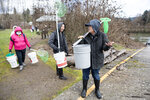

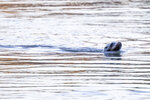
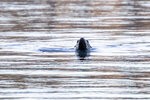
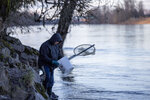
Crowds from across the state gathered along the Cowlitz River on Tuesday afternoon for the second day of smelt-dipping approved by the Washington state Department of Fish and Wildlife (WDFW) this year.
However, many were confused and disappointed by the lack of smelt.
WDFW officials at Castle Rock counted two smelt from one person and later 14 from another person. Two weeks prior, many people reached their daily limit of 10 pounds of smelt within an hour.
A designated portion of the Cowlitz River was open for the recreational dipnetting from 1 p.m. to 6 p.m. Tuesday.
People, like Mike Sautner, traveled to multiple spots on the river in hopes of finding more smelt.
“I was hoping for more than one fish,” Sautner said. “I’ve never had a day like this, and I’ve been fishing since I was little.”
Recent years have only had one approved fishery a year, if that.
“Though hundreds of millions of eulachon can return to the Columbia River — and then to tributaries such as the Cowlitz and Lewis rivers — the run is not always able to support recreational fishing,” WDFW states online. “Each year, fishery managers with the Washington Department of Fish and Wildlife monitor the smelt run to estimate the size of the return and whether a fishery can be opened.”
There was no recreational fishing for Columbia River smelt in 2018 or 2019.
Eulachon, commonly known as Columbia River smelt, have been listed as a threatened species under the U.S. Endangered Species Act since 2010 due to a sharp decline in returns that began in the 1990s.
“Smelt generally begin returning to the Columbia River in the early part of the year, and the peak run timing varies,” WDFW states. “In past years, fisheries have typically opened anytime from early February to early March. These fisheries are brief — often just a single day, or even just a few hours — and can be announced only a few days before the opener is set to take place. These short fisheries are necessary to minimize the impact on this sensitive population, even in years when the fish return in large numbers. Managers evaluate and estimate the catch from any recreational fishing openers and determine if the run is still returning in sufficient numbers, and may announce additional fishery openings.”
WDFW updated its smelt management plan in September 2023. The new plan identifies current management strategies and makes recommendations for monitoring and evaluation of the population, as well as harvest criteria and communication between state and federal managers.
Learn more online at https://wdfw.wa.gov/fishing/regulations/smelt.